Everest High Pass Trek
- 19 Breakfast
- 15 Lunch
- 15 Dinner
- Hotel in Kathmandu
- Lodges during trek
- Trekking
- Sightseeing
- Scenic Flight

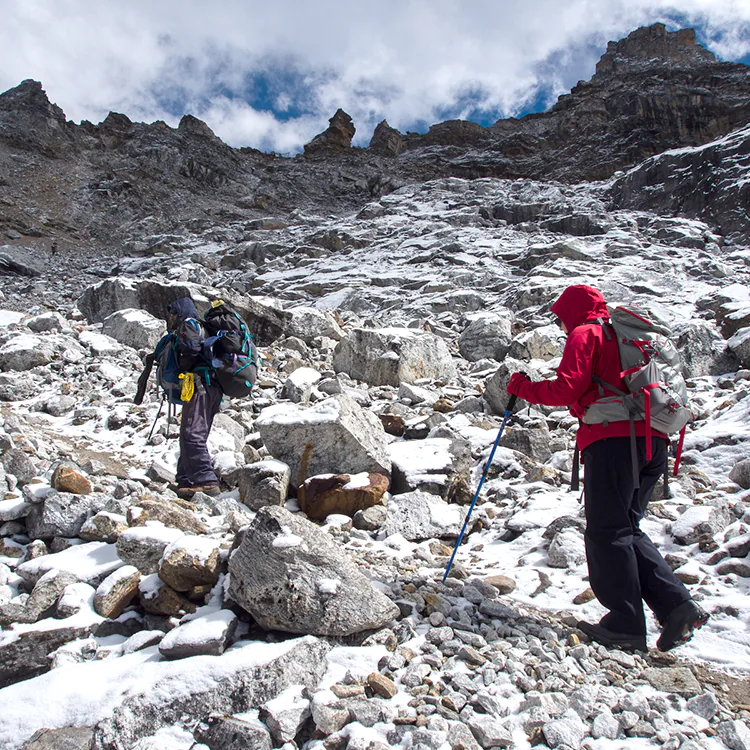
The main attraction of the Everest Three Passes Trek is the three passes – Renjo La (5,446m), Cho La (5,420m), and Kongma La Pass (5,535m). Though it is a very strenuous trek, it guarantees the exhilarating experience of adventure, perseverance, and excitement. Furthermore, the view from the top is spectacular as one can get the closest possible views of Mt Everest, Lhotse, Cho-yu, and Makalu.
Everest area has highlights that make trekkers develop different styles to explore its richness. Dropping another classic trek, some adventurous hikers finally go through all three deep and dangerous crevasses (passes), i.e., Everest High Pass Trek, to view the world’s highest peaks. More challenging than the traditional Everest trek, it involves crossing three passes, Kongma-La Pass (5535m), Cho-La Pass (5368m), and Renjo La pass (5338m). The breathtaking sceneries, awe-inspiring snow-covered peaks, and playful village landscapes are experiences that can give you a lifetime of a beautiful memory.
Like every other Everest trek, it starts from a 35 min flight from Kathmandu to Lukla. The 17 or longer days trek then introduces the Sagarmatha National Park, allowing you to explore the forest inhabitants’ diversity of floras and faunas. The greenery of parks, colorful rhododendron forests, and the sight of playful monkeys are not a scene you can view anytime. Trekker’s junction Namche Bazaar, a place for acclimatization, reminds you of the bustling Kathmandu city as it has places to see, shop, and eat.
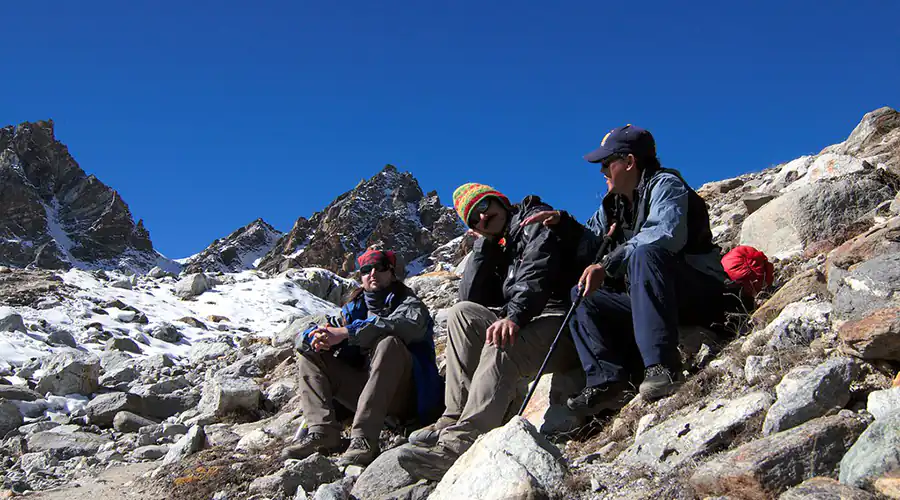
Renjo La Pass
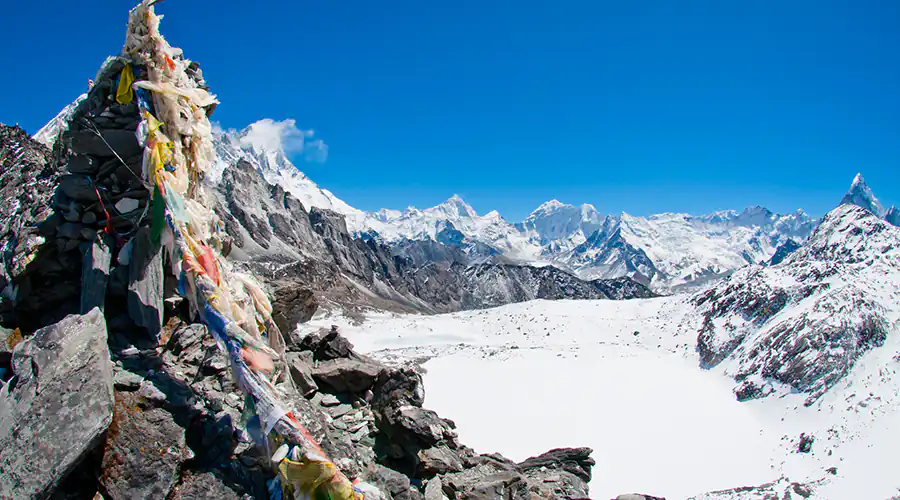
Kongma La Pass
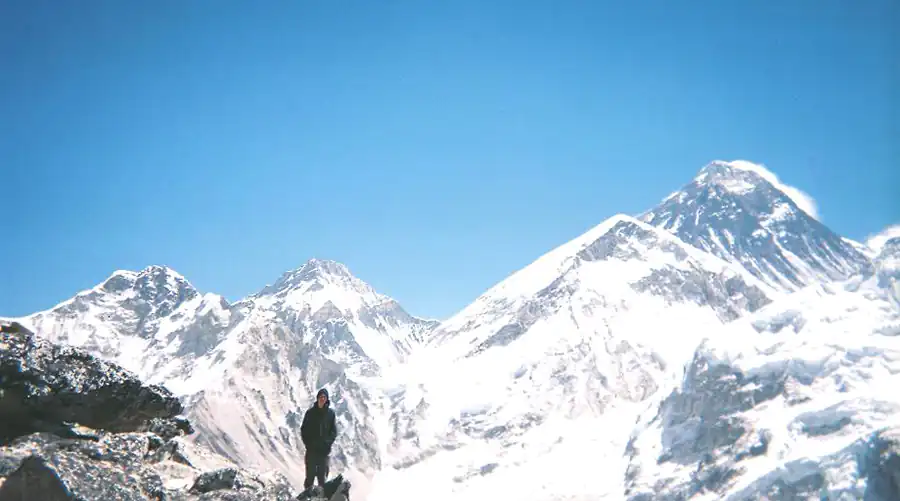
Kala Patthar
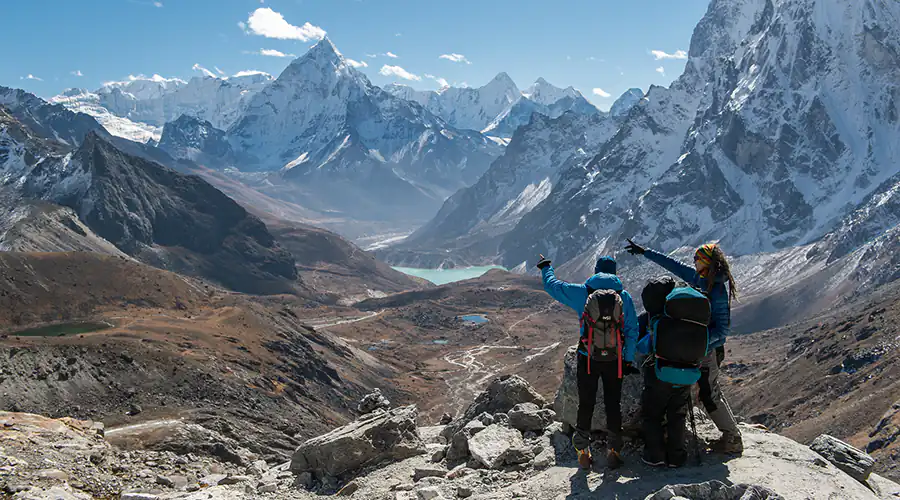
Chola Pass
Peregrine Treks representatives will receive you at the airport and transfer you to the hotel. The tour plan will be discussed and handed over to you.
The early morning flight will take you to Lukla Tenzing-Hillary Airport. The mountain flight journey would be a mesmerizing memory in itself. The close view of the mountain range and hills of the Khumbu region, as well as rural Nepal, can be savored from the flight. Once landed in Lukla, the trekking starts after meeting the rest of the support crew. The day’s trekking would be up to the Phakding.
Phakding to Namche is a relatively easy trekking time spanning just up to 3 hrs. The trail comprises a suspension bridge with colorful prayer flags on it. The views of the Mountains start to welcome you towards its lap. This part of the trail highlights the Tibetan wall paintings and the occasional views of the Mountains.
Early morning breakfast at the hotel and to Everest view Hotel. Everest Base Camp trekking requires strength and endurance as well as willpower. The day’s rest will be taken in Namche to prepare for the trek. The acclimatization hiking will take place as you will be taken to the world’s highest located hotel, The Everest View Hotel, after Breakfast.
The panoramic views of mountains and the surrounding area from the hotel are splendid. It is highly recommended for the trekkers to go through the acclimatization hiking as it prepares your body and soul for the trekking.
The trekking trail from Namche to Tengboche consists of plain flat land trekking and steep uphill. The flat trail trekking provides outstanding views of Mountains like Thamserku, Everest, Pumori, Lhotse, and other Himalayan ranges. The trail on the banks of Dudhkoshi River and the rhododendron forests amaze you. The distant scenes of the majestic Himalayas would also mesmerize you and let you forget the hardship encountered today. Once you have reached Tengboche, serenity prevails. The continuous prayers and smell of incense from the monastery would ignite your spiritual self.
The trekking trail is slightly downhill and enters the small valley passing by Pangboche. The usual crossing of the river from the suspension bridge and wooden bridges is there with the standard view of the mountains above you.
The acclimatization and Sherpa culture observation rest day is also allocated in Dingboche.
Trekkers would like the views of Tawache, Amadablam, Chalotse, and Nuptse-Lhotse. The trekking would then move towards Chhukung, passing by stone-walled fields and entering the glacier amidst the gigantic Himalayas and yak herders. The Himalayas and glaciers surround Chukung. If time permits, the long hiking to the rocky place of Chhukung Ri is also from Chhukung.
The climbing of the Chhukung Ri would take place, and it is better advised to cross Kong Ma La pass only after the visit to the Chhukung village and acclimatization via short hiking or roaming around Chhukung Valley.
The trekking from Chhukung to Kong Ma La would be a legendary experience for you to reach Lobuche. The time frame would be around 6-7 hours, and you will be walking in the highest part of the trip, i.e., Kong Ma La Pass. Once you have crossed the Moraine, then the Lobuche can be reached.
The lateral moraine of the Khumbu region glacier provides the crest of the northern ridge of Everest. Our trail moves along the lateral moraine of the Khumbu Glacier. The course offers a stunning view of mountains as well.
The early morning hike to the sunrise destination of Kalapther then follows. We start our trek to Kala Patthar early in the morning to catch remarkable views of the sun’s first light shining on Mt. Everest, but you have to prepare for the altitude and passion for the trekking.
Lobuche to Dzongala trail creates an enchanting experience of the Himalayan alpine environment. The downhill trekking on a route alongside Khumbu Glacier from Lobuche to Dzongla passes by Chola La Lake. The view of Awi Peak is mesmerizing and incredible.
As the trekking gain height, the Cho La Pass starts to be seen, and the Ama Dablam looms in the south and Cholatse in the west. The climbing of the Chola can be very tricky around the crevasses. Flags mark the summit of the pass. The scenery, however, is magnificent and breathtaking. The trail finally comes to Ngozumpa glacier, the longest glacier among the six lakes series.
The climbing of the Gokyo Ri takes place towards the enchanting views of the mountains. The tour of the fourth lake could also be done on this day. The view from the famous Scoundrel Viewpoint near the fifth lake provides astonishing views of the mountains.
Trekkers will start the day early morning for the long trekking ahead. The trail moves along the Dudh Pokhari for a short period. The track showcases the astounding scenery of the Rolwaling ranges and other Himalayan ranges. The walking would be very rocky and winds down over a loose screen to be in the south of Tsho lake. The trekking from Marlung on the east bank of the Bhote Koshi river would be mesmerizing, strenuous, and adventurous.
The trekking descends from Marlung to Thame, following the traditional trail used by Tibetan traders. The trekkers then cross the Bhote Koshi River and fall further to Taranga. Thame on a hillside will be gone gradually and pass by small Sherpa villages. The voyage reaches the Namche Bazaar.
On this day, you will descend to Lukla to return to Kathmandu.
After 30 minutes flight from Lukla, the private vehicle will take you to the significant heritage and architectural landmarks of the Valley as well as UNESCO World Heritage Site listed places like Patan Durbar Square, Kathmandu Durbar Square, Boudhanath, Swyambunath, and Pashupatinath.
Fly back to your country after the amazing Everest Three High passes trek: A private vehicle will take you to the airport for departure.
The Everest High Pass trek can start by enjoying La pass or Kongma La pass, depending on the guides and trekkers’ interests. The Renjo La Pass has beautiful villages like Thame and Lungdhen. The difficulty ascending the newly found and highest pass then requires a leisure descent to the Tranquil mountain lake Gokyo. You reach the icy and most interesting Cho La Pass by climbing the Gokyo Ri (5330m/17487 feet) for a magnificent view of mountains and glaciers like Ngozumpa.
The trail also passes Everest Base Camp itself, where the place Kala Patthar (5545m) gives you the enigmatic and closest view of Mt. Everest. Descending the Chhukung Ri, hidden under the Lhotse-Nuptse wall, is a long hike to the Kongma La Pass. The long hike is more enjoyable when a famous monastery welcomes you to Tengboche. Down through the beautiful valley of Khumjung, Everest high pass trek ends back in Lukla.
Though the long, strenuous hike is tiring and challenging, the Sherpa people’s service and their hospitability make everything worthwhile at the end of the day.
We don’t follow the practice of compromising on accommodation and meals. As accommodation in Kathmandu, you will be staying in one of the finest five-star hotels. Kathmandu’s accommodations will enchant you with its amenities, such as hot showers and internet facilities. Furthermore, teahouses in the Everest Region will provide your accommodation during the trek. Because these teahouses provide traditional Nepali accommodations, you will have the option of sharing the bathroom there.
You may completely appreciate the beauty of magnificent mountains touching the sky from the windows of these teahouses. Furthermore, the room will be smaller, including comfortable beds and cushions. You may discover faux fur wool blankets and great mattresses. Additionally, while staying in Kathmandu, we will provide you with breakfast and dinner. All meals, including breakfast, dinner, and lunch throughout the trek, come under the trekking package.
Take advantage of the beautiful breakfast, which includes milk tea and bread baked in the vicinity, to enjoy the morning. Additionally, the lunch menu offers traditional Nepali cuisine and Tibetan and European specialties. During the evening, you will be able to appreciate traditional Nepalese cuisine as well as other delicacies fully. There will also be a variety of appetizers and snacks, including momos, Chowmien, Chapatti, Khir, and others.
A season like spring won’t exist for the Everest High Pass Trek. Everything seems incredible during this time of year. Moreover, The springtime in the Everest region brings beautiful views from March through May. The mild weather will provide an excellent glimpse of the beautiful mountains and glaciers.
The windy weather clears away all the smog and humidity, giving a clear glimpse of the mountains and their surrounding beauty. Your body will experience a gratifying sensation due to the rhododendron wave and the fragrance of the woods. September through November are a crucial and fantastic period for the Everest High Pass trek. During this time of year, moderate rain helps to keep the air clean and changes the appearance of the Khumbu region’s landscape.
From the end of November to the first of February, the Everest region’s chilly climate will make your trek challenging. There will be snow and ice everywhere above the Dingboche to Gokyo. The deep snow will provide problems along the trek, extending the distance and time needed to finish it. So, only snow and winter enthusiasts can appreciate the subfreezing conditions in the Everest region.
In the Everest Region, heavy rains from June to August cause everything to become soggy and damp. Similarly, the monsoon winds flowing from the Bay of Bengal provide considerable rain to this region. Trekkers who enjoy trekking in an adventurous season would be fortunate to trek during this time. Additionally, shorts and a half vest are preferable for daytime trekking due to the high temperature.
The Everest High Pass Trek ranges from highly severe to moderately challenging. It will take 5 to 6 hours each day to make the steep ascent from Dingboche to Gokyo, making the trek strenuous. As you move out from Namche Bazaar, the elevation will rise, requiring more endurance and stamina to overcome.
As a result, the trek will be more complex and have a narrower course above 4000 to 5000 meters in elevation. Taking precautions against altitude sickness above 4000m and ascending the trial with incredible mental and physical steadiness will yield the most satisfactory results. However, this excursion will be appropriate for both novice and professional trekkers.
There won’t be much to be aware of before the Everest High Pass Trek, but preparing yourself before the trek will make this expedition more joyful. Additionally, stretching and mild cardiovascular activities are ideal before the trek. Similarly, exercises targeting your muscles will make them flexible and easier for you to use in steady-state trials.
Running uphill and downhill while carrying backpacks and swimming can also increase your confidence level for the expedition. Additionally, bring any necessary goods you’ll need for the trek. Furthermore, predicting the weather before the trek can help you get mentally ready by letting you know how it may be throughout the expedition.
While on the trek, safety is always prioritized over all else. Before training, you must first and foremost concentrate on workouts and activities that will keep your body stable and perfectly fit for the trek. It would help if you also had a general understanding of the equipment utilized for trekking. Trekking beyond 5000 meters without equipment is allegedly dangerous.
Pack everything correctly, including your trek accessories and woolen clothing. Furthermore, it will be feasible to altogether avoid altitude sickness with the correct quantity of rest and food intake throughout the trek. In an emergency, we will notify the rescue and evacuation teams and the medical personnel to arrive on the spot.
The spring and autumn seasons will work out well to experience the most nuanced view of the Khumbu region. However, you can do this trek all around the year. In monsoon, you can see greenery everywhere; in winter, there will be snow on the trekking trail.
Everest High Pass is Moderate to Difficult and appropriate for experienced trekkers. Please let us know during the booking if you haven’t experienced high-altitude trekking. We will develop another itinerary for you. You might start the trek from a low altitude and need more acclimatization during the trek.
Woolen apparel, including jackets, trousers, caps, scarf, innerwear, and gloves, will be essential for the Everest High Pass trek. The clothing list depends upon the weather. If you trek in winter, you might need a warm down jacket; if you trek in summer, you might need a raincoat, umbrella, anti-leech cream, etc. We will provide the complete packing list after confirmation of the trek with Peregrine Treks.
From the summit of Gokyo Ri, you can see mountains like Lhotse, Cho Oyu, Makalu, Everest, Kanchenjunga, Ama Dablam, and the other Himalayas of the Mahalangur Himalayan range. There are many unnamed Himalayas, too, which you can see from Cho La Pass, Kongma La Pass, and Renjo La Pass.
During the Everest High Pass trek, you should be trekking for an average of 6 to 7 hours per day. On a passing day like Cho La Pass, Renjo La Pass, and Kongma La Pass, you need to walk approx 10-11 hours, and it will start in the early morning.

Based on 3 Reviews

In my whole life, it was the most satisfactory experience I’ve ever had. It was fantastic to visit the ancient Sherpa community in Namche Bazaar. Thanks to Peregrine Trek for making it memorable and thrilling.

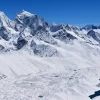
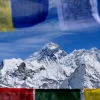


Excellent





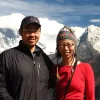
My experience with Peregrine on the Everest High Pass Trek is something I’ll never forget. The excursion was unique, revealing the distinguishing characteristics of the Khumbu Region. Knowing that I was a part of this fantastic expedition makes me very happy.
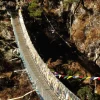
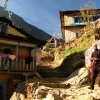
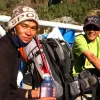
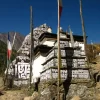

Very Good






My expedition to the Everest High Pass was just fantastic. I never anticipated being able to see the magnificent vista of glaciers from above the Gokyo RI. The walking through Sagarmatha National Park from the brink of Dudkoshi was also excellent.
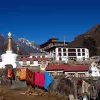
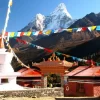
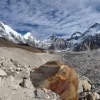
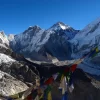

Very Good





